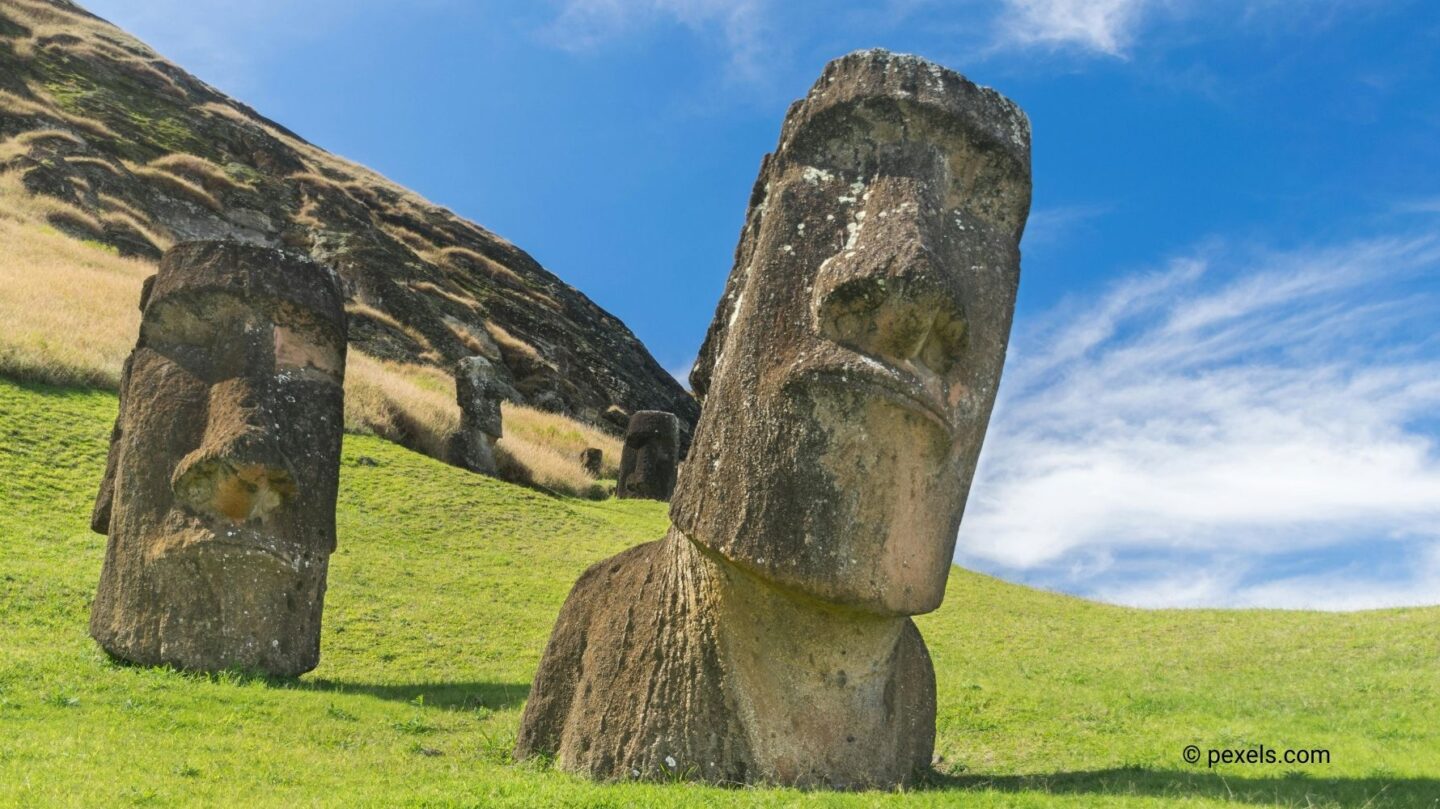The Mystery of the Moai
Easter Island, known locally as Rapa Nui, is a remote island in the southeastern Pacific Ocean. It is home to one of the most intriguing archaeological wonders of the world: the Moai statues. These enormous stone figures, carved by the island’s early inhabitants, have stood as silent guardians for centuries, sparking fascination and mystery.
The Moai, numbering around 1,000, are scattered across the island. Each statue, with its elongated face and imposing presence, was carefully carved from volcanic tuff, a soft and workable rock found at the island’s Rano Raraku quarry. Their sheer size and intricate craftsmanship reflect the ingenuity and cultural sophistication of the Rapa Nui people.
Who Built the Moai and Why?
The Moai were created by the Rapa Nui civilization, believed to have settled the island between 700 and 1100 CE. Each statue represents an ancestral figure, honoring the deceased chiefs and leaders who were thought to possess spiritual power, or mana. The statues were erected on stone platforms called ahu, which served as ceremonial sites.
The Moai’s placement is significant. Most face inland, watching over the island’s communities, with their backs to the sea. This positioning reflects their role as protectors, ensuring the well-being and prosperity of the people. The few that face the ocean are thought to serve a different purpose, possibly as guardians against external threats.
Engineering Marvels
The construction and transportation of the Moai remain among the greatest mysteries of Easter Island. Some statues weigh up to 80 tons and stand as tall as 10 meters (33 feet). Despite lacking advanced tools or technology, the Rapa Nui people managed to carve, transport, and erect these massive figures with remarkable precision.
One widely accepted theory suggests that the statues were moved using a combination of wooden sledges, ropes, and human labor. Recent experiments have also demonstrated that the statues could have been “walked” into place by tilting and rocking them forward using ropes, a method requiring teamwork and coordination.
The Collapse of a Civilization
The Rapa Nui civilization reached its peak between the 13th and 15th centuries, but it eventually experienced a dramatic decline. Environmental factors, including deforestation and soil erosion, likely played a role. The island’s overexploitation of resources may have contributed to famine and societal collapse.
European contact in the 18th century brought additional challenges, including disease, slavery, and cultural disruption, further decimating the Rapa Nui population. By the late 19th century, the once-thriving civilization had dwindled to just a few hundred individuals.
Preserving the Moai and Their Legacy
Today, the Moai remain a powerful symbol of Rapa Nui culture and resilience. Efforts to preserve these statues are ongoing, with researchers and conservationists working to protect them from weathering and other environmental threats. In 1995, UNESCO designated Easter Island as a World Heritage Site, recognizing its cultural and historical significance.
The island is now a popular destination for tourists, who are drawn by the mystery and majesty of the Moai. However, balancing tourism with preservation remains a challenge, as the island’s fragile ecosystem and cultural heritage face increasing pressure.
Silent Witnesses to a Rich History
The Moai of Easter Island are more than just statues; they are a window into the past, offering insights into the ingenuity, beliefs, and struggles of a lost civilization. As silent guardians, they stand as a reminder of humanity’s capacity for creativity and its responsibility to protect and learn from the treasures of history. The story of the Moai continues to captivate the world, ensuring that the legacy of the Rapa Nui endures for generations to come.
